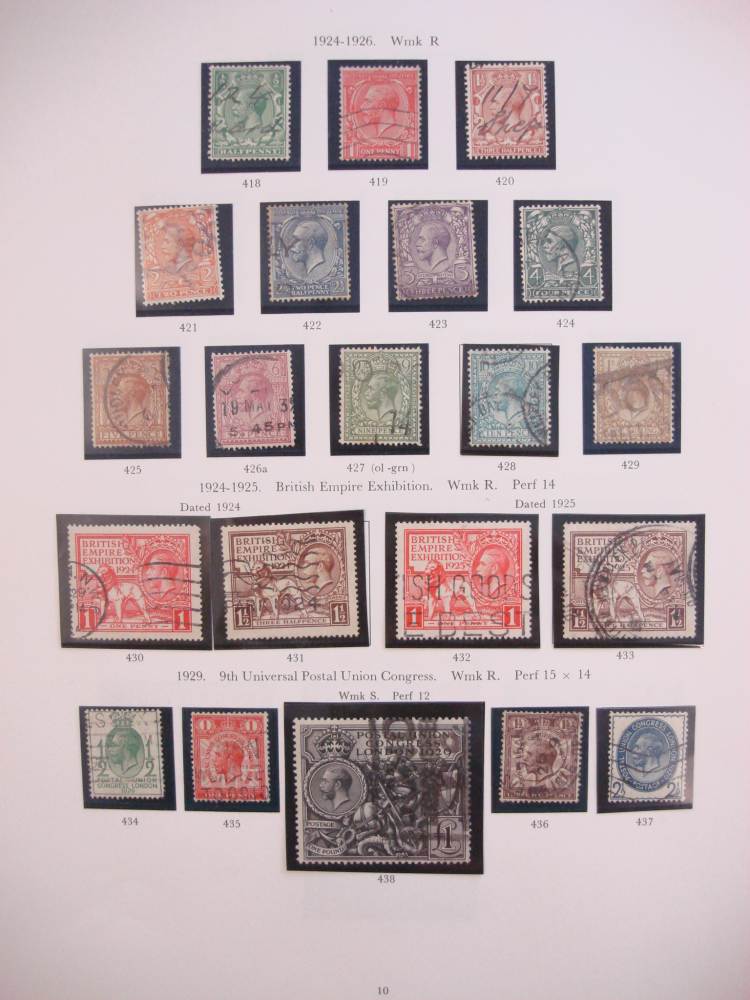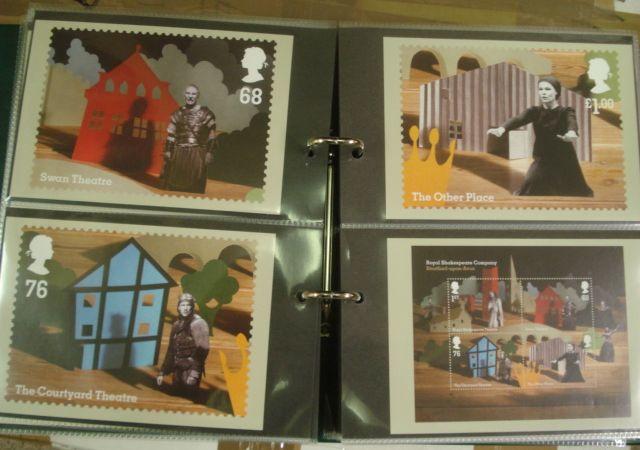Twenty-five presentation albums containing 585 World War I photographs associated with the Late Field Marshall William 1st Baron Birdwood of ANZAC and of Totnes in t he Country of Devon together with two additional printed albums The German raid on Scarborough, .December 16th 1914 and Bombardment of Lowestoft by the Germans April 25th, 1916 and a copy of Birdwood's autobiography Khaki and Gown General Sir William Birdwood was commander of the Australian and New Zealand Army Corps at Gallipoli in 1915 during the Great War 1914-18. As leader of this remarkable body of men, Birdwood can be credited more than any other individual with helping establish the Anzac spirit. Universally admired by his peers and respected by the men under his command, Birdwood's shrewd understanding and lenient command of his troops proved crucial to the development of the Anzac character. Though General Monash gained perhaps more fame as battle commander of the Australian forces in 1918, it was Birdwood's initial leadership at Gallipoli that shaped and moulded the Anzacs' unique fighting spirit. William Riddell Birdwood was born in 1865 at Kirkee, India, into a family steeped in British military heritage. Educated at Clifton College and the. Royal Military College, Sandhurst, Birdwood served throughout India, Nepal and the Persian Gulf lt was in South Africa during the Boer War that Birdwood first encountered Australian volunteer soldiers, of whom he would later write, "l have always felt that my close contact with these excellent fellows laid the foundation of my very happy relations with the Australian and New Zealand troops throughout the War of 1914-18". Following the outbreak of the. Great War Birdwood was appointed to command the Australian and New Zealand forces in the invasion of Turkey on 25th April 1915. At Gallipoli Birdwood showed the character that saw him described by the official Australia war correspondent C.E.W. Bean "as a vigorous, brave, upright and understanding leader", and earned him the affectionate nickname of "Birdie" and the epithet "the idol of Anzac". Birdwood continued to lead the Anzac Corps on the Western Front during 1916-17, and after the war Birdwood maintained an interest in Australia. It was intended that he become Governor-General in 1930, but Scullin's Labor Government insisted, however, that it was time for someone Australian born to take the position. He died in England in 1951 The present collection of 25 personal photograph albums has a tantalizing history having been purchased by the vendor in 1978 from the estate of Sir Stephen Courtauld in Umtali, Rhodesia, during the height of the conflict with neighbouring Mozambique – a case of the records of one war being salvaged from destruction in another. Courtauld had served as an officer in the Artists' Rif1es during the Great War, seeing action in the same areas of the Front as Birdwood, and earning the Military Cross in 1918. The 585 photographs are ostensibly drawn from official material and reveal a clear focus on the career and command of Field Marshal Sir William Birdwood. There are official portraits of Birdwood with the King, with Lord Kitchener and Lord Northcliffe, and three separate images of Birdwood unveiling the memorial to the First Australian Division in June 1917. Included are such famous images as Birdwood swimming naked at Gallipoli (GO0401), and surveying the ground on the last day prior to evacuation of the peninsula on December l9th (GO0659). Included in the Lot is a fine copy of Birdwood's autobiography Khaki and'Gown (2nd imp. 1942). Many of the images are well known photographs by the official artist Ernest Brooks and the large format and high quality of the reproductions clearly suggest the involvement of a professional artist in the compilation and assembly of the collection. The personal nature of the collection is nevertheless evidenced by its idiosyncratic cataloguing, together with colloquial captions such as "a Frenchy village whic
Twenty-five presentation albums containing 585 World War I photographs associated with the Late Field Marshall William 1st Baron Birdwood of ANZAC and of Totnes in t he Country of Devon together with two additional printed albums The German raid on Scarborough, .December 16th 1914 and Bombardment of Lowestoft by the Germans April 25th, 1916 and a copy of Birdwood's autobiography Khaki and Gown General Sir William Birdwood was commander of the Australian and New Zealand Army Corps at Gallipoli in 1915 during the Great War 1914-18. As leader of this remarkable body of men, Birdwood can be credited more than any other individual with helping establish the Anzac spirit. Universally admired by his peers and respected by the men under his command, Birdwood's shrewd understanding and lenient command of his troops proved crucial to the development of the Anzac character. Though General Monash gained perhaps more fame as battle commander of the Australian forces in 1918, it was Birdwood's initial leadership at Gallipoli that shaped and moulded the Anzacs' unique fighting spirit. William Riddell Birdwood was born in 1865 at Kirkee, India, into a family steeped in British military heritage. Educated at Clifton College and the. Royal Military College, Sandhurst, Birdwood served throughout India, Nepal and the Persian Gulf lt was in South Africa during the Boer War that Birdwood first encountered Australian volunteer soldiers, of whom he would later write, "l have always felt that my close contact with these excellent fellows laid the foundation of my very happy relations with the Australian and New Zealand troops throughout the War of 1914-18". Following the outbreak of the. Great War Birdwood was appointed to command the Australian and New Zealand forces in the invasion of Turkey on 25th April 1915. At Gallipoli Birdwood showed the character that saw him described by the official Australia war correspondent C.E.W. Bean "as a vigorous, brave, upright and understanding leader", and earned him the affectionate nickname of "Birdie" and the epithet "the idol of Anzac". Birdwood continued to lead the Anzac Corps on the Western Front during 1916-17, and after the war Birdwood maintained an interest in Australia. It was intended that he become Governor-General in 1930, but Scullin's Labor Government insisted, however, that it was time for someone Australian born to take the position. He died in England in 1951 The present collection of 25 personal photograph albums has a tantalizing history having been purchased by the vendor in 1978 from the estate of Sir Stephen Courtauld in Umtali, Rhodesia, during the height of the conflict with neighbouring Mozambique – a case of the records of one war being salvaged from destruction in another. Courtauld had served as an officer in the Artists' Rif1es during the Great War, seeing action in the same areas of the Front as Birdwood, and earning the Military Cross in 1918. The 585 photographs are ostensibly drawn from official material and reveal a clear focus on the career and command of Field Marshal Sir William Birdwood. There are official portraits of Birdwood with the King, with Lord Kitchener and Lord Northcliffe, and three separate images of Birdwood unveiling the memorial to the First Australian Division in June 1917. Included are such famous images as Birdwood swimming naked at Gallipoli (GO0401), and surveying the ground on the last day prior to evacuation of the peninsula on December l9th (GO0659). Included in the Lot is a fine copy of Birdwood's autobiography Khaki and'Gown (2nd imp. 1942). Many of the images are well known photographs by the official artist Ernest Brooks and the large format and high quality of the reproductions clearly suggest the involvement of a professional artist in the compilation and assembly of the collection. The personal nature of the collection is nevertheless evidenced by its idiosyncratic cataloguing, together with colloquial captions such as "a Frenchy village whic















Testen Sie LotSearch und seine Premium-Features 7 Tage - ohne Kosten!
Lassen Sie sich automatisch über neue Objekte in kommenden Auktionen benachrichtigen.
Suchauftrag anlegen